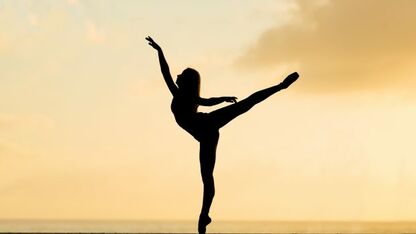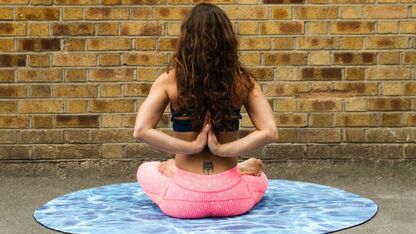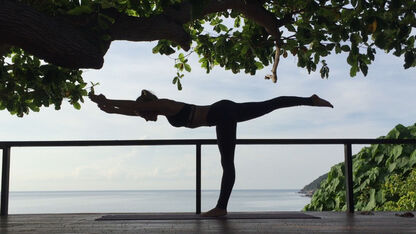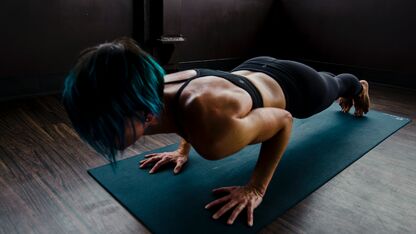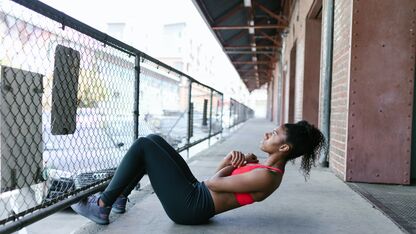Yoga 101
The yoga community is growing so fast and there are so many new people interested in yoga. I made a Yoga 101 for the ones that are curious and would like to know more about yoga. In this article I answer the most frequent questions I get about yoga.
1. What is Yoga?
The word yoga, from the Sanskrit word yuj means to yoke or bind and is often interpreted as “union” or a method of discipline.
Most modern yoga practices rely heavily on the Yoga Sutras of Patajali, a series of aphorisms written c. 250 CE, as the basis for their philosophies. Classis yoga under Patanjali has 8 limbs of yoga: the yamas (restraints), niyamas (observances), asana (postures), pranayama (breathing), pratyahara (withdrawal of senses), dharana (concentration), dhyani (meditation), and samadhi (absorption). As we explore these eight limbs, we begin by refining our behaviour in the outer world, and bringing our focus inwards until we reach samadhi (liberation, enlightenment).
2. Is yoga a religion?
Yoga is not a religion, it’s a philosophy. A philosophy that began about 5,000 years ago in India. The Yoga Sutras of Pantanjali provide a framework for spiritual growth and mastery over the physical and mental body. Yoga sometimes interweaves other philosophies such as Hinduism or Buddhism, but it is not necessary to study those paths in order to practice or study yoga.
3. What does Om mean?
Om is a mantra, or vibration, that is traditionally chanted at the beginning and end of yoga sessions. Coming from Hinduism and Yoga, the mantra is considered to have high spiritual and creative power but despite this, it is a mantra that can be recited by anyone. It’s both a sound and a symbol rich in meaning and depth and when pronounced correctly it is actually AUM.
Chanting Om allows us to recognise our experience as a reflection of how the whole universe moves, think about the setting sun, the rising moon, the ebb and flow of the tides and the beating of our hearts. As we chant Om, it takes us for a ride on this universal movement, through our breath, our awareness, and our physical energy, and we begin to sense a bigger connection that is both uplifting and soothing.
4. Are there different types of yoga?
There is only one yoga and its all Hatha Yoga. The goal of Hatha Yoga is to balance and still energy to make meditation accessible.
- Iyengar: With a focus on structure and alignment, by using props such as blocks and straps.
- Ashtanga Vinyasa: The “original” Vinyasa flow that utilises bandhas, ujjayi breathing and Sun Salutations continuing into 6 series of posture sequences of advancing complexibility and requiring extraordinary flexibility.
- Anusara: Playful, using creatively worded principles of alignment, life affirming tantric philosophy, and heart oriented teaching.
- Bikram: The original Hot Yoga. This style uses an ordered sequence of 26 poses and is practices in a heated studio (40 degrees).
- Power/Flow/Vinyasa: Athletical and physically challenging style. It’s a flowing practice where you move to the rhythm of your breath to get the heart rate up.
- Yin: This style uses low intensity poses, often seated or laying down, with or without props, and has practitioners relax into the poses for up to 5 minutes or longer.
- Aerial: fluid, acrobatic yoga in a hammock.
- Acro: A physical practice which is a combination of yoga and acrobatics.
- Kundalini: Focused on meditation and breathing to awaken the internal energy.
5. What is a Sun Salutation?
Sun Salutations are an affective full body warm up that can be performed ritualistically with the rising and setting of the sun, putting the practitioner in tune with the rhythm of life on earth. To me, a sun salutation is the foundation of a yoga practice. The sun salutation is a great way to create strength and build up the inner fire.
There are two types of Sun Salutations, Surya Namaskar A and Surya Namaskar B. Click here to see “How to do Surya Namaskar A”.
Continue reading on the next page to find the answers to 6 more important questions about yoga.
6. Do I have to be a vegetarian to practice yoga?
The first principle of yoga philosophy is ahimsa, which means non harming to self and others. Some people interpret this to include not eating animal products. There is debate about this in the yoga community—I believe that it is a personal decision that everyone has to make for themselves.
7. What should I eat before and after practice?
Most yoga practices are filled with twists from side to side, turning upside down, and bending forward and backward. Eating a heavy meal and not letting it properly digest before your practice can be really uncomfortable.
I normally don’t eat before my practice, but this is different for everyone. For people with a fast-acting digestive system, I recommend having a light snack before practice (a fruit, some nuts or a juice). Your body will be asking for food shortly after the practice. I really like smoothies or oatmeal after my practice.
8. How many times a week should I practice yoga?
Yoga is good in so many ways. Even if you only practice for one hour a week, you will experience the benefits of the practice. If you can do more than that, you will certainly experience more benefits. I suggest starting with two or three times a week, variating from 20-60 minutes, depending on how much time you have to practice. You will start to notice that after a while of practicing, your desire to practice will expand naturally and you’ll make more time for your practice.
9. I’m not flexible, can I do yoga?
Yes! Everyone can do yoga. Many people think that yoga is only for people who are flexible and especially women. This is not true! Yoga is for everyone, men and women, old and young, flexible and inflexible. Come as you are and you will start to practice with your own perfect body. Flexibility will come with time and regular practice.
10. What do I need to begin?
All you really need to begin practicing yoga is your body, your mind, and a bit of curiosity. You can wear whatever you feel like wearing. Make sure you can move and breathe in it. A pair of leggings, or shorts, a not too baggy shirt (this will slide over your head every time you go upside down), and barefoot.
Although you can practice yoga everywhere, it is nice to have a yoga mat to practice on. Most studios rent yoga mats, but as you start to practice more often, you’ll build a connection with your mat, so It’s worth buying your own. A place where you can move, breath and just be YOU!
11. What does Namaste mean?
Nama means bow, as means I, and te means you. Therefore, namaste literally means “bow me you” or “I bow to you”. There are so many translations, but the ones I like are: “My soul honours your soul” or “The divine in me honours the divine in you”.
To perform Namaste, we place the hands together at the heart charka, close the eyes, and bow the head. You can also place your hands together in front of the third eye(between the eyebrows), bowing the head, and then bringing the hands down to the heart.
I hope this article answered most of your questions about yoga and if not, feel free to ask my anything. Reach out to me through this blog, leave a message on my website www.liberty-yoga.com or send me an email libertysuaresyoga@gmail.com. I would love to help in any way I can.
Namaste,
Liberty

